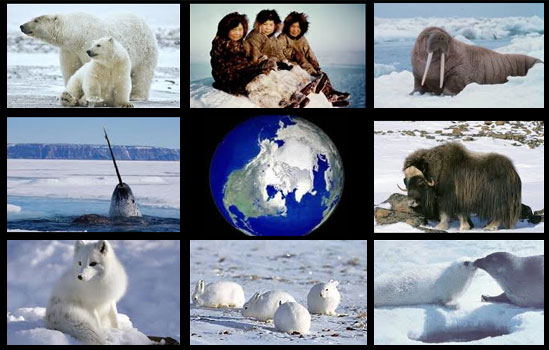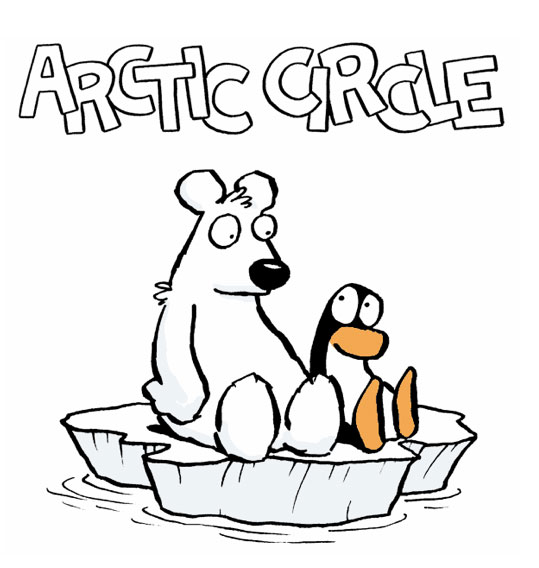Save the Arctic and Its Wildlife.
The impacts of climate change are unfolding far more rapidly and intensely in the Arctic than any other area of the planet. Soaring temperatures, rapidly melting ice and snow, rising sea levels and acidifying oceans are threatening the Arctic ecosystem, and it’s not just the polar bear that is in peril. Climate change is affecting Arctic wildlife from great whales to tiny plankton, and threatens to unravel the entire Ecosystem. This report chronicles the most profound climatic changes in the Arctic and the impacts those changes are already having on wildlife, and concludes with a roadmap of actions needed to protect the Arctic, as we know it. Because the Arctic is the earth’s early warning system, we must protect it from climate change to preserve the rest of the planet as well.
Thinking of environmental threats and ways in which all of us need to concentrate more on our ecology and less on those man made things that distract our lives daily, GreenDustries has become very aware of the plight of animals across the globe. Recently we’ve been reading about threats to the polar bears, a direct result of the careless actions of humans.
Not Only Polar Bears are in danger of extinction but also: the Arctic Fox, the Pacific Walrus, the Seals (Ringed Seal & Bearded Seal, the Harp Seal; the Ribbon Seal) the Gray Whale, the Beluga Whale, the Bowhead Whale, the Narwhal, the Sea Butterfly and the Sea Birds. The Caribou / Reindeer and the Muskox.
According to the website, www.endangeredpolarbear.com, polar bears need the cold, snow and ice of the Polar Regions. And the Polar Regions are warming up because of an increase in carbon dioxide – greenhouse gas – levels.
 Researchers estimate that there are between 22,000 and 40,000 polar bears in the world. The temperatures that the polar bears have to endure in the winter can range from -40°F (-40°C) to as cold as -90°F (-90°C). The summer months can be much warmer for the polar bears with temperatures reaching to 77°F (25°C). Polar bears have to be able to handle 100° difference in temperature between the seasons. As temperatures warm, polar bears have a tougher time surviving in their natural habitat.
Researchers estimate that there are between 22,000 and 40,000 polar bears in the world. The temperatures that the polar bears have to endure in the winter can range from -40°F (-40°C) to as cold as -90°F (-90°C). The summer months can be much warmer for the polar bears with temperatures reaching to 77°F (25°C). Polar bears have to be able to handle 100° difference in temperature between the seasons. As temperatures warm, polar bears have a tougher time surviving in their natural habitat.
“We, humans, are the cause of the polar bears being threatened,” the site states. “We are slowly killing the planet and most of us are oblivious to it.”
VANISHING HABITATS create by Climate change is triggering the rapid loss of entire Arctic habitats, most notably sea ice and glaciers, and is leading to the degradation of others. For example, ocean acidification is making Arctic waters unlivable for many calcifying creatures, melting permafrost threatens to drain tundra wetlands, and erosion is degrading coastal habitats.
A study released July 6, 2009 states that not only is global warming threatening the existence of polar bears, but also harmful chemicals that man is releasing into the environment, according to the website. Mercury has been found in polar bear bodies. Mercury is ingested by the polar bear through other animals, which also have ingested mercury through the food chain. By the time a polar bear eats a seal, for example, the mercury levels could have a lethal effect on the polar bear.
Polar bears are dying. As global warming accelerates, the sea ice they depend on for survival is literally melting away. Bears are starving and drowning, as they have to swim farther and farther to reach solid ice. Some are even turning to cannibalism in a desperate search for food. Those trapped on land hundreds of miles from the nearest ice often wander near villages in search of food and are shot.
As if that weren’t enough, oil and gas drilling is destroying and polluting their fast-dwindling Arctic habitat. A third of all polar bears — including all bears in Alaska — will be extinct by 2050 if current trends continue. The rest of the species will be gone by the end of the century.
But it’s not too late to save the polar bear if we join together and take immediate action. The science is clear. We know what needs to be done — we just need to build the political support to do it. Says the: Center for Biological Diversity.
GreenDustries has made it a point to bring awareness to a range of environmental threats globally, to our water, land and forests. But what’s happening to the animals of our planet is as egregious – if not more – as the rest of what humans have done to litter and pollute our sensitive ecosystems.
As we drive ourselves to set an example in our own industry we also challenge others to learn more about what is happening to the earth – and how we can stop it.






No comments yet.